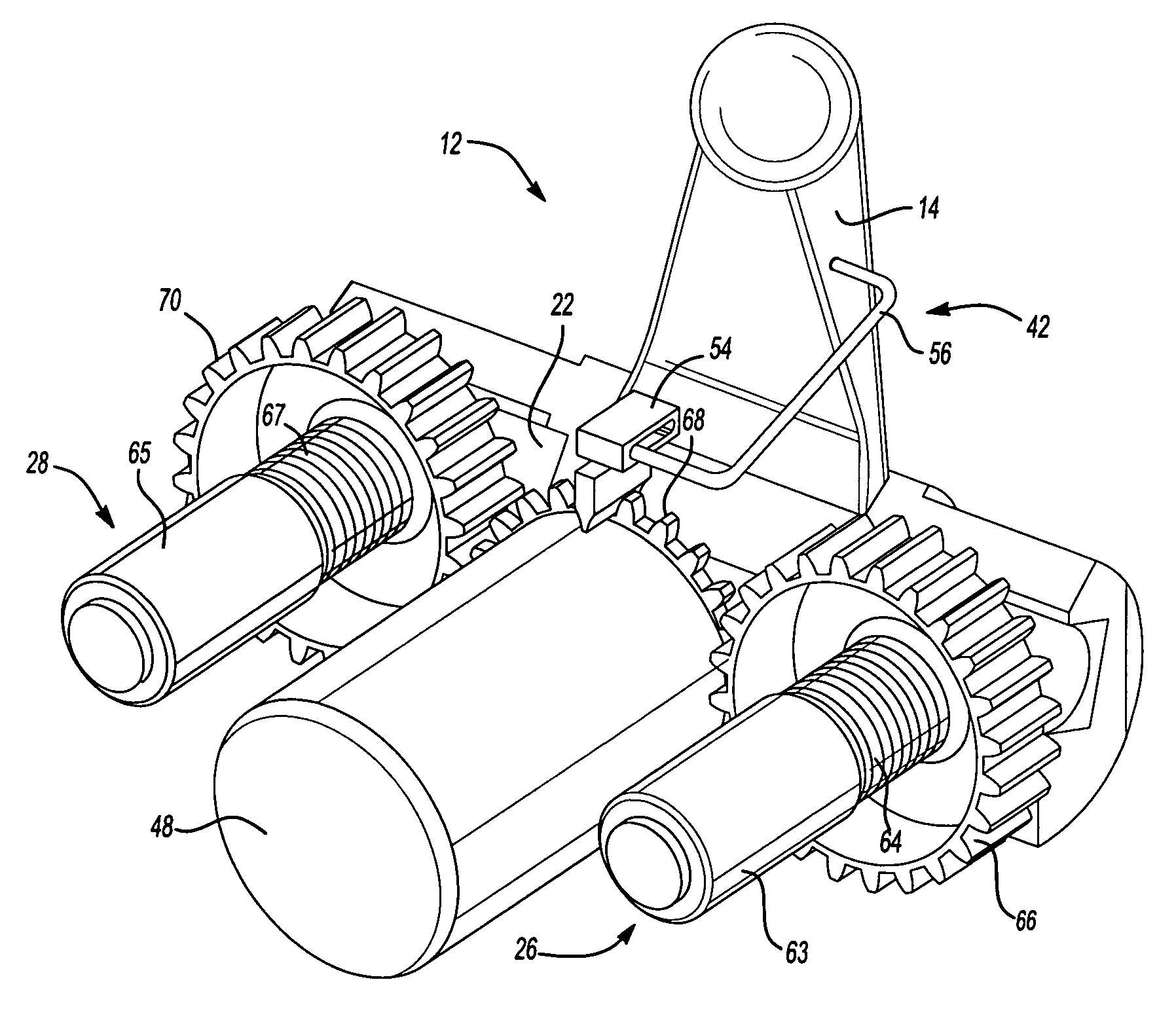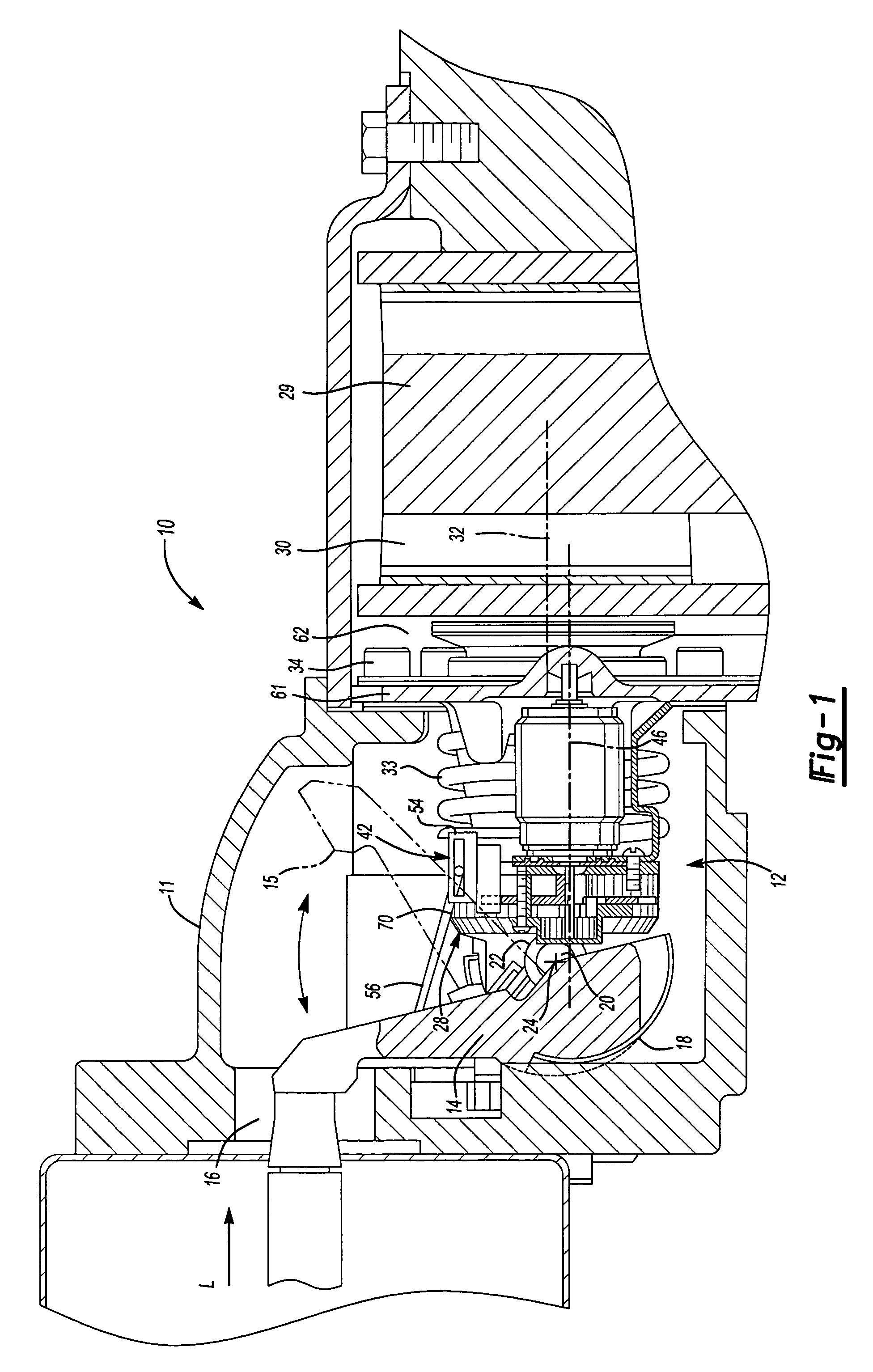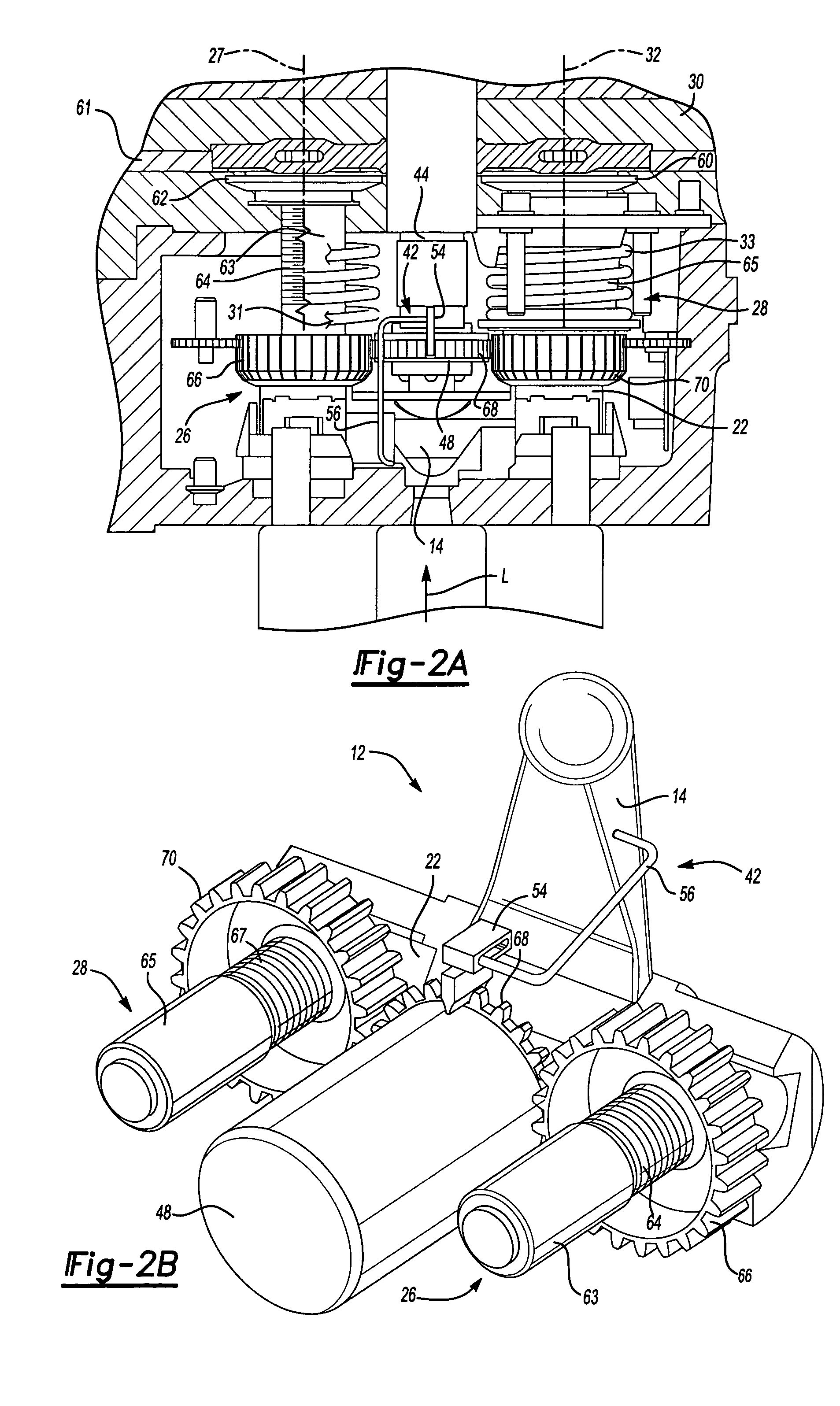Rapid take up and vibration proof adjuster mechanism
a technology of adjuster mechanism and slack adjustment, which is applied in the direction of slack adjusters, friction linings, mechanical devices, etc., can solve the problems of increasing gap between the brake pad and the brake disc, increasing slack when the brake is applied, and reducing the effectiveness of the brake. , to prevent undesirable slack adjustment in the brake system
- Summary
- Abstract
- Description
- Claims
- Application Information
AI Technical Summary
Benefits of technology
Problems solved by technology
Method used
Image
Examples
Embodiment Construction
[0036]FIG. 1 illustrates a disc brake assembly 10 that utilizes a slack adjustment system 12 of the present invention. The disc brake assembly 10 has a frame 11, which encloses the internal components and bears the loads generated by them. As a driver operates a brake (not shown) an input load (illustrated by arrow L) is transferred to a lever 14, through an opening 16 in the frame 11. The lever 14 is rotatably supported by the frame 11 through a bearing 18. Applying the input load L rotates the lever 14 about a lever axis 20. That is, the lever 14 rotates clockwise about the lever axis 20, as illustrated in FIG. 1.
[0037]A cylindrical roller 22 is recessed within the base of the lever 14. The roller 22 is eccentrically centered relative the center of rotation of the lever 14. That is, the roller 22 rotates about a roller axis 24 that is offset from the lever axis 20. When the input load L causes the lever 14 to rotate about the lever axis 20 the roller 22 rotates about the roller ax...
PUM
 Login to View More
Login to View More Abstract
Description
Claims
Application Information
 Login to View More
Login to View More - R&D
- Intellectual Property
- Life Sciences
- Materials
- Tech Scout
- Unparalleled Data Quality
- Higher Quality Content
- 60% Fewer Hallucinations
Browse by: Latest US Patents, China's latest patents, Technical Efficacy Thesaurus, Application Domain, Technology Topic, Popular Technical Reports.
© 2025 PatSnap. All rights reserved.Legal|Privacy policy|Modern Slavery Act Transparency Statement|Sitemap|About US| Contact US: help@patsnap.com



